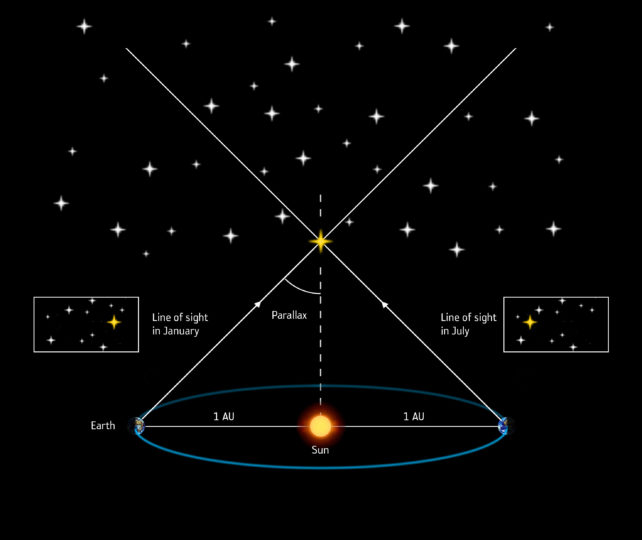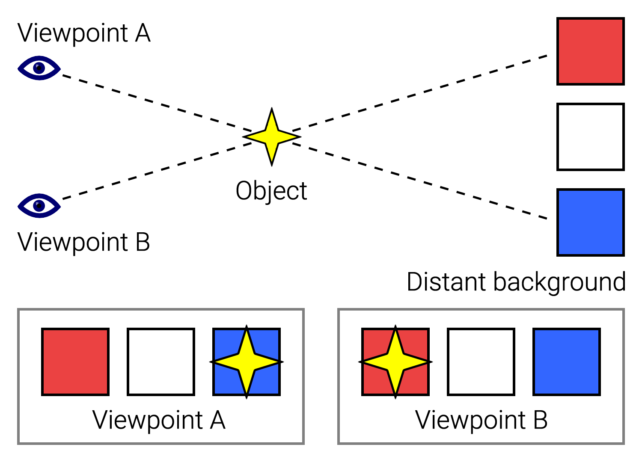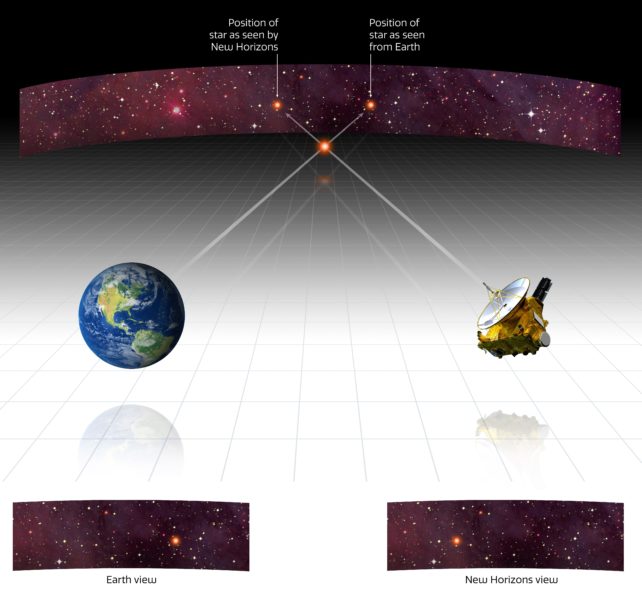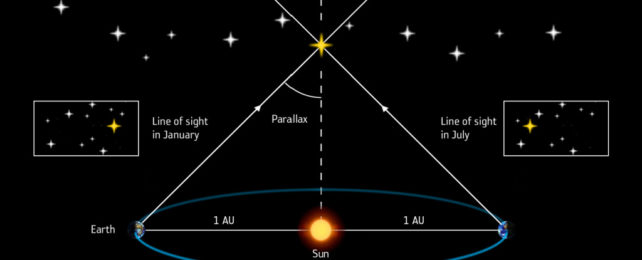Parallax is the change in an object's relative position as seen from two different positions.
Mathematically speaking, the relationship between any two observation points and a distant object can be summed up in what's known as a parallax angle.
So long as some of the information is known – such as an angle between the lines of sight and the distance between observations – trigonometry can be used to deduce how far away the object is.

Our brains do this intuitively on a personal level; each of our eyes 'sees' objects according to their own line of sight, with differences in the positions of objects interpreted by our brain as perpendicular distance, or depth.
It's why we perceive objects immediately in front of us as three dimensional.

On increasingly larger scales, parallax angles can describe much longer distances, including those between Earth and other astronomical bodies such as the Sun or other nearby stars.
How do astronomers use parallax?
To measure the huge distances separating objects in our inner Solar System, such as from Earth to the Sun, early astronomers had to widen the gap between observer positions to a scale of entire continents by jumping from one side of the globe to the other.
Centuries ago, astronomers took their telescopes across oceans to observe the inner planets as they eclipsed the Sun. Such planetary crossings (known as transits) are rare events that rely on a perfect alignment between Earth, the planet being observed, and the Sun.
A predicted transit of Venus in 1769 saw observers all over the world, from North America to Russia, to Europe to as far south as Tahiti, collect data on the timing and relative distances of the apparent paths taken by the planet's tiny silhouette as it journeyed from one side of the Sun's disc to the other.
Two years later a French astronomer named Jérôme Lalande applied those measurements, along with some from an earlier transit, to come up with an estimate of 153 million kilometres (95 million miles) between Earth and the Sun; just a touch over the currently accepted figure of around 149,600,000 kilometres.

For objects beyond our Solar System, distances between observations need to be much further apart than the diameter of a single planet.
Fortunately Earth's orbit provides such a gap, stretching more than 300 million kilometres (186 million miles).
Spacecraft can also provide us with another vantage point with which to calculate distance. NASA's New Horizon probe, which did a flyby of Pluto and is continuing to explore the outer Solar System has done just that.
The European Space Agency's Gaia space observatory is now specifically undertaking the mammoth task of recording the positions of around a billion astronomical objects.
Orbiting the Sun at a distance of around 1.5 million kilometres from Earth, Gaia will detect tiny differences in the apparent positions of these objects from different points in its yearly journey.
Applying parallax angles to Gaia's measurements will produce rough estimates on objects as far away as 30,000 light-years away – a distance between Earth and the middle of the Milky Way. For nearer objects, measurements could be so accurate they'll be within 0.001 percent the actual distance.
All Explainer articles are determined by fact checkers to be correct and relevant at the time of publishing. Text and images may be altered, removed, or added to as an editorial decision to keep information current.
